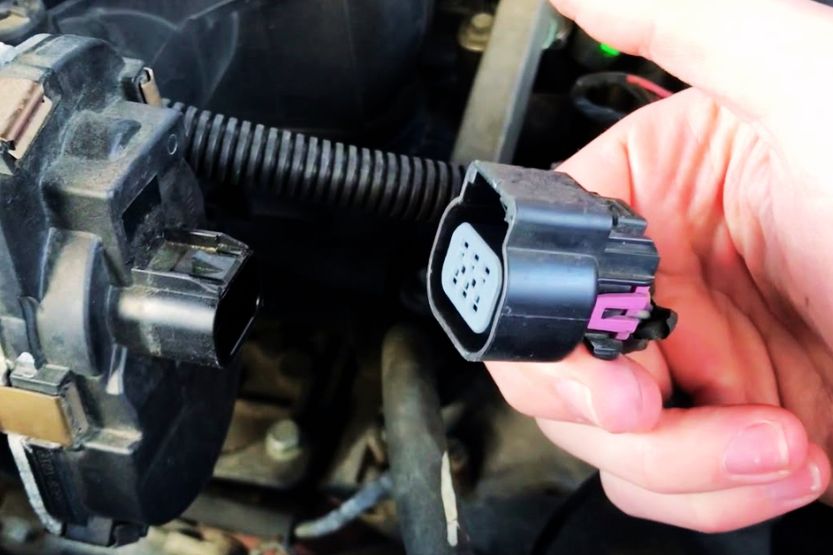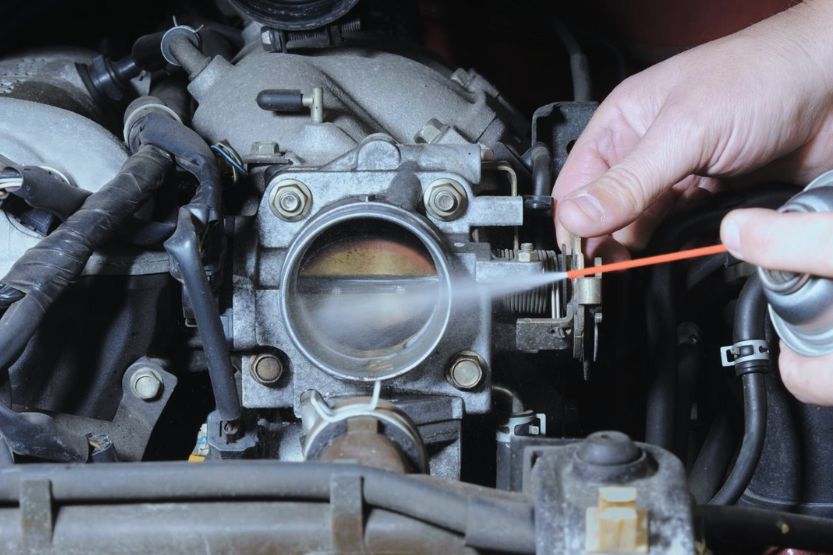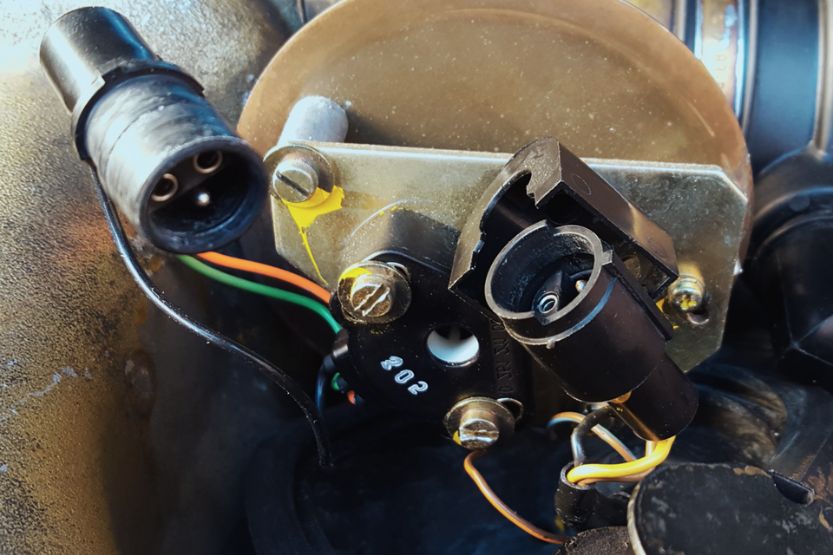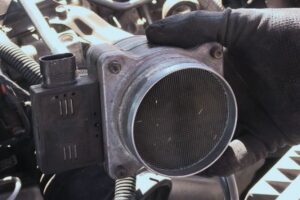You can expect modern cars to provide great fuel economy and efficient overall performance because of their ECUs. But the ECU can’t do this without the TPS. So, what happens when you unplug the throttle position sensor?
When you unplug the TPS of your car, its engine will not run properly. The engine will not be able to burn the fuel efficiently, and there’ll be a lot of unburned gases. So, you will be wasting your fuel and polluting the atmosphere. More seriously, the engine and the exhaust system will have a major carbon buildup.
The TPS is very important in the efficient operation of the engine. Without it, the ECU will not be able to time the ignition accurately and monitor the quantity of fuel that the engine requires during the combustion cycle. This will cause your engine to stall or surge, which is very dangerous in traffic.
Read on to learn more about the TPS of your car and why you shouldn’t unplug it while driving.
What Happens When You Unplug the Throttle Position Sensor?

Engine Won’t Run Properly
The moment you unplug the TPS of your car, its engine will not run properly. There will be incomplete fuel combustion inside the engine, so that you will be wasting your money. The unburned gases are emitted by the exhaust pipe and will cause pollution of the air.
Carbon Deposit Build-up
Another serious consequence is that carbon deposits will build up inside the engine and the exhaust. This can cause major engine issues in the future.
Engine Stalling
Depending on the year and model of your car, its engine could also stall or surge. This is dangerous if you are driving in the middle of traffic. In some instances, the engine will still run as usual while idling. But when you step on the gas, it will stall.
TPS Function
The function of the TPS is to send a signal to the car’s electronic control unit (ECU) after determining the amount of air going into the engine. With this information, the ECU will adjust the fuel mixture as well as the timing of the ignition.
Unplugging the TPS Will Result in an Inefficient Engine
What happens if you disconnect the throttle position sensor? If you unplug the TPS, there is no way the ECU can regulate or determine the correct air-to-fuel ratio going to the engine. The ratio can get rich or lean, which will cause the engine to run inefficiently.
Several things can happen if the TPS is disconnected from the engine. Your car may lack power when you try to accelerate, it may hesitate to accelerate, or it may accelerate itself.
You may also find it difficult to change gears. But one thing will surely happen: there will be a considerable drop in the engine’s fuel efficiency.
What Happens After Unplugging the TPS
If you know the consequences of unplugging the TPS of your car, you won’t do it. The amount and severity of the consequences will depend on the car where the TPS was unplugged:
1. Some Cars May Burp
One of the most important sensors that an engine uses is the TPS. The engine cannot know if you are opening the throttle or stepping on the gas pedal if it is unplugged. Some cars may burp when their TPSs are unplugged while the engine is running.
2. Increase in Airflow
Some cars will experience an increase in airflow. The ECU will then provide a value that the TPS could not give (since it is unplugged). You may be able to drive your car home with a TPS code and a Check Engine Light.
3. Dead Engine
Some cars won’t even allow you to step on the gas pedal because their engine would die immediately. These cars need the signal from the TPS to know where you have placed your foot so it can determine what you intend to do.
4. Might Cause Your Car to Stall or Rev
The TPS tells the ECU how much the driver is trying to slow down or go faster. If you put the throttle position in one place, but the ECU thinks it is in another, this will cause your car to stall or to rev in a way that will endanger you.
5. ECU Might Put the Car Into a Neutral Limp Idle Mode
In many modern vehicles and as a safety procedure, if the ECU thinks that the TPS is malfunctioning, it puts the car into a neutral limp idle mode. Car manufacturers do this because if the ECU can’t trust the TPS, it won’t allow the operator to put power on the wheels.
This is a safer alternative than the driver accelerating at full throttle while the car runs on the street.
As you can see, if the TPS is disconnected from the system, the ECU will have difficulty navigating the airflow, spark, and gas to start the engine smoothly. It will be confused as to the exact position of the throttle.
What Is the Function of the Throttle Position Sensor

Every internal combustion engine has a throttle valve. This valve opens up when you step on the accelerator or gas pedal. You can open this valve fully, halfway, or any amount in between. The throttle position sensor (TPS) is the component that measures how much the valve is opened.
So, this component controls the air allowed into the engine’s intake manifold. The TPS is mounted onto the throttle body. It measures the opening and closing of the throttle valve and sends the information to the ECU.
The ECU will then use the information, along with other data like the engine RPM, MAF (mass air flow), and temperature, to determine the right quantity of fuel that will be injected into the engine and the timing of the sparks from the spark plugs.
You can still drive your car with the TPS unplugged or broken. However, it will be dangerous and have a long-term impact on the life of your car.
The information that the TPS sends to the ECU is very critical to the efficient operation of the engine. So, it should always be plugged in when operating your vehicle.
Again, what happens when you unplug the throttle position sensor? Disconnecting the throttle position sensor (TPS) will affect your car’s airflow temperature and speed, which might lead to engine stalling, power loss, rough idle, and poor fuel economy.
More on TPS
Here are some things you need to know about the TPS regarding the effect on your car if it is connected and disconnected:
Can You Start the Engine with a Disconnected TPS?
Even with the TPS unplugged, you can still start the engine. The primary function of the TPS is to inform the ECU about the throttle position. While you can still drive your car with the TPS disconnected, it is not advisable because it will adversely affect your vehicle.
Without the vital information coming from the TPS, the ECU won’t be able to perform its job well. The car’s computer will resort to guessing the throttle position. It could allow excess air into the intake manifold resulting in poor engine performance.
The engine could deliver more power even if you have taken your foot off the gas pedal. Thankfully, car manufacturers have anticipated these kinds of situations. That’s why they have a built-in limp mode system on your car should this happen by accident or design.
Can Your Car Function Properly If the TPS Is Unplugged?
The ECU is the car component that controls the amount of air that goes into the engine’s intake manifold. However, the TPS sensor determines if the throttle or the part that allows air to flow inside the engine is open and how much.
These two functions are closely related, yet two separate components perform them. You need the TPS to work in tandem with the ECU to ensure the optimum operation of the engine. So, if you want your car to run smoothly, you must always plug in the TPS.
Is It Recommended to Disconnect the TPS?
You are advised not to unplug the TPS of your car. If you disconnect it, you are courting danger and risking your car’s life and health. The things that will be directly impacted if you unplug the TPS are the following:
- Speed of the engine
- Airflow temperature
- Carbon deposit buildup inside the engine and the exhaust system
Unplugging the TPS will result in the following:
- Power loss
- Rough idling
- Poor fuel efficiency
- Damage to the engine
Is a TPS Sensor Necessary?
The TPS is essential in the efficient functioning of your engine. If there is no TPS in your car, its ECU will have difficulty monitoring the fuel required by the engine. It will also encounter difficulties in accurately timing the ignition.
Ensuring that only the correct air-to-fuel ratio is admitted inside the combustion chamber is essential in enhancing the drivability and performance of your car.
Without it, your car won’t be able to provide you with a smooth and comfortable ride. It may even endanger your life and the lives of others on the road.
Frequently Asked Questions

Here are some of the answers to the frequently asked questions about the TPS and what will happen if you disconnect it from the engine:
What Happens When You Disconnect the TPS?
Once you unplug the TPS, your vehicle will not run properly. The engine will experience poor fuel economy, emitting toxic fumes that will foul the atmosphere.
Your engine will be adversely affected as well as its exhaust system because there will be a significant buildup of carbon inside its internals.
Can I Drive My Car with the Tps Unplugged?
Yes, you can still drive your car with its TPS disconnected. However, the quality of your ride will drop considerably. It may also be dangerous since your engine may stall or surge ahead without you stepping on the gas.
The TPS is the part of your car that ensures that only the correct amount of air-to-fuel ratio is admitted to the combustion chambers. The engine will operate optimally if it is plugged into the system. However, without it, all sorts of engine issues will result.
Why Is the TPS so Important?
The TPS is very important in the proper and efficient functioning of the engine. The component sends signals to the car’s ECU after determining the amount of air going into the engine.
The ECU needs this information to adjust the air-to-fuel mixture and the proper timing of the ignition.
What Are the Consequences If the TPS Is Disconnected?
If the TPS is unplugged, it will be very difficult for the car’s ECU to track the airflow, the timing of the sparks, and the amount of gas the engine needs so it can start smoothly. Additionally, it will not be able to determine the exact position of the throttle at any one time.
The ECU will not be able to tell if you are opening or closing the throttle. Airflow will increase in some cars if their TPSs are disconnected. Some cars won’t even allow you to step on the gas pedal because their engines would die immediately if their TPSs are unplugged.
A car’s ECU needs the TPS signal to determine where your foot is on the gas pedal. This is how it can determine what you intend to do, whether you want to go slower or faster.
In Closing: If You Unplug the TPS of the Engine, What Will Happen?
If you unplug the TPS of your vehicle, its engine will not operate properly. The engine won’t be able to burn the fuel efficiently. You will be wasting your precious fuel. More unburned gases will go out of the exhaust, polluting the atmosphere.
More seriously, there will be a major carbon buildup inside the engine and the exhaust system, which can lead to major engine problems. You can’t unplug the TPS because its role in the efficient operation of your engine is very important.
Without it, the car’s ECU will be unable to time the ignition correctly and monitor the fuel the engine requires every combustion cycle.





![Driving With a Bad Purge Valve [What Happens? Signs and Symptoms] driving with a bad purge valve](https://roadsumo.com/wp-content/uploads/2022/02/driving-with-a-bad-purge-valve-150x150.jpg)
![How to Fix a Bad O2 Sensor [Oxygen Sensor Repair] How to Fix a Bad O2 Sensor](https://roadsumo.com/wp-content/uploads/2021/10/how-to-fix-a-bad-O2-sensor-150x150.jpg)

![Read more about the article Traction Control Light [What Is It and Why Is It On?]](https://roadsumo.com/wp-content/uploads/2022/03/traction-control-light-300x200.jpg)
